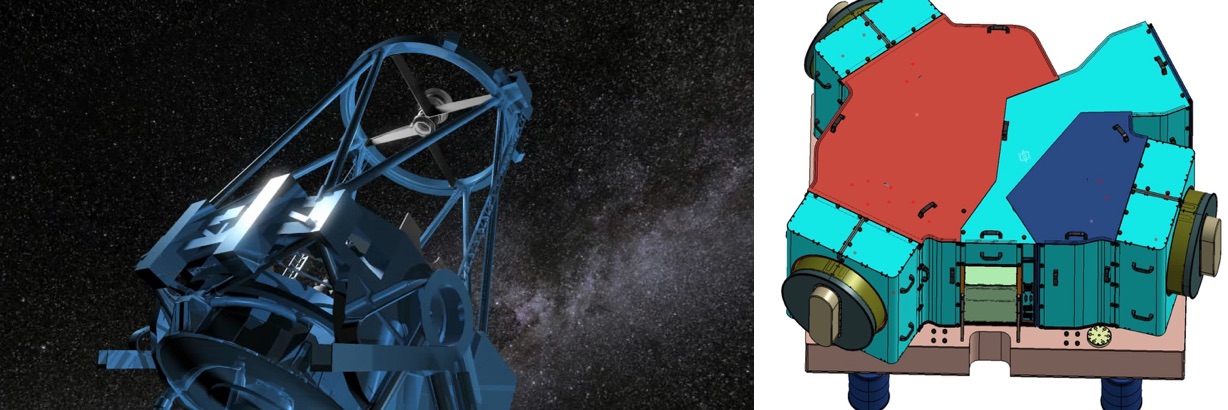Projects Home
I am involved in several large projects, including Dark Energy Spectroscopic Instrument (DESI), Subaru Prime Focus Spectrograph (PFS), the China Survey Space Telescope (CSST) project, the PKU-KIAA Innovation NSFC Group, and so on.

DESI
I am a member of the DESI (Dark Energy Spectroscopic Instrument) collaboration. DESI is a multi-fiber optical spectrograph funded by the U.S. Department of Energy Office of Science. It will be conducted on the Mayall 4-meter telescope at Kitt Peak National Observatory. DESI will obtain optical spectra for tens of millions of galaxies and quasars, constructing a 3-dimensional map spanning the nearby universe to 10 billion light years. It will measure the effect of dark energy on the expansion of the universe, via various techniques such as the measurement of baryon acoustic oscillations. For more details, see: http://desi.lbl.gov.

PFS
I am a member of the Subaru PFS (Prime Focus Spectrograph) collaboration. PFS is a spectrograph system with a fiber positioner system to be mounted at the prime focus of the Subaru telescope. The instrument allows simultaneous spectral observation of up to 2400 astronomical targets in a wide field of view of 1.3 degree diameter at a time. It will be the most powerful optical spectrograph in the near future. It will find clues to help us answer questions such as, how did the Universe begin, does it have an end, why do we exsit. For more details, see: http://pfs.ipmu.jp.

CSST
China Survey Space Telescope (CSST) is a 2m off-axis telescope. It will be flying independently in the same orbit as the space station. CSST is equipped with five instruments, and the major one is a survey camera with a field-of-view of 1.1 square degrees. The survey camera will take images in seven broad bands from NUV to y, and it will simultaneously take slitless spectra covering the same wavelength range. During its nominal mission lifetime of 10 years, CSST will cover more than 17,000 square degrees of the sky to a depth of ~26 AB mag in g and r. It will also cover about 400 square degrees in its deep fields. I am currently Associate Director of the CSST PKU Science Center, and deeply involved in CSST-related science topics.

PKU-KIAA Innovation NSFC Group
I am one of the core members of the PKU-KIAA Innovation NSFC Group (PKING). PKING is supported by the prestigious National Science Foundation of China Innovation Group program. I am one of the six original members of the innovation group. PKING consists of three subgroups that cover three broad research fields: gravitational astrophysics, interstellar medium, and sky-survey science. I am the coordinator of the sky-survey science group. Our group members are actively involved in many ongoing and future leading survey projects, such as SDSS, DESI, PFS, CSST, LSST, LAMOST, NGVS, ASAS-SN, etc. These surveys cover a wide range of astrophysical topics, including nearby galaxies, distant universe, transient sky, etc. For more details, see: http://kavli.pku.edu.cn/pking/ and http://kavli.pku.edu.cn/SSSgroup/.
Others
Details are coming soon.

